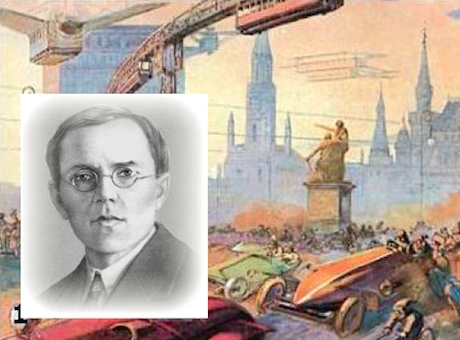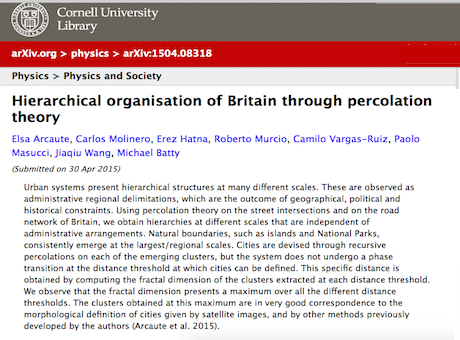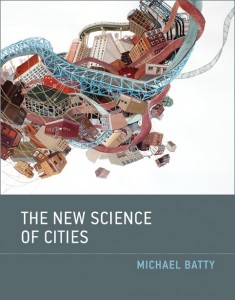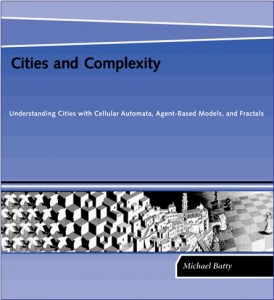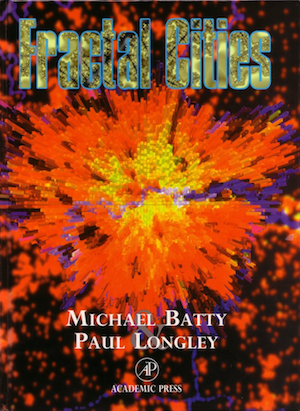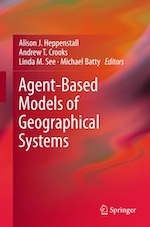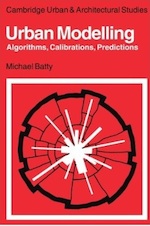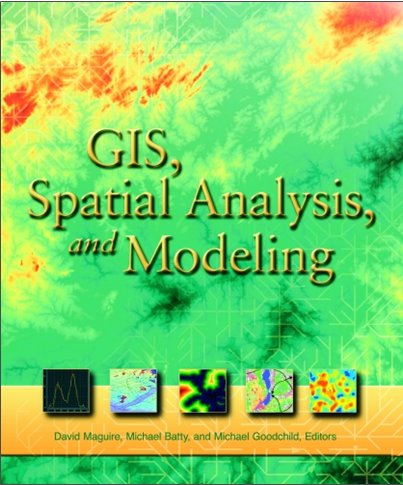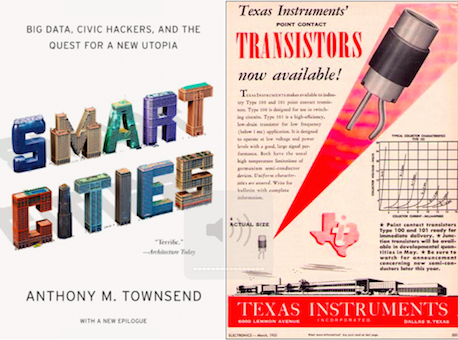
Asked by Built Environment to review this some 18 months after it was first published, the world of smart cities has moved on so fast at the level of how we use personal devices to navigate, shop, search etc. that Anthony Townsend has included a new Epilogue in the paperback edition. I commented on the book back in 2013 but here is my full review which I hope those interested in smart cities will read. It’s printed below here – you don’t need to log onto anywhere. It will come out in due course in the Journal – doubtless – but it is a great and readable book if you haven’t come across it before.
The REVIEW
Anthony M. Townsend: Smart Cities: Big Data, Civic Hackers, and the Quest for a New Utopia, W. W. Norton Inc., New York, ISBN-978-0-393-082867-6 hardcover; ISBN-978-0-393-34978-8 pbk
Cities are highly counter-intuitive places and the smart city especially so. I have worked with computers and cities all my life from the days when we built mathematical models and punched out the code on paper tape, took it to the computer centre where operators in white coats ran the programs, and then we went back a day later to get the output. 50 years on the world has turned many times as computers have now become embedded in everything we do but they still seek to amaze. The fact that they are now being embedded extensively in cities, in public places, is still a surprise to me, and when they get embedded into ourselves as they surely will, it will be even more of a drama as that cyborg world begins to descend on us. What we still use to manipulate the world – our computer models – is now being composed of those very computers we use to understand it and this raises all the paradoxes of using machines to understand themselves. This in and of itself is a strange kind of recursive reality, a mirror world that threatens to continually confuse our perceptions
But back to the here and now and how these new technologies are changing many things that we do in cities and everyday life. On my way to Dallas, Texas where I am writing this review, everything seemed to be more automated than on my last US trip 4 months ago. Buying a drink in the United Terminal in Newark, I sat at a table and brought up a screen on the iPad in front of me, part of the table, that let me select the drink I wanted. I swiped my card across the top and then the interface asked me if I wanted to pay in Air Miles or in real – well hardly real any more –credit. In fact the drink was delivered by a human and I was mightily impressed by the range of drinks on offer. Where they poured them in the restaurant I could not imagine – not at the bar as I couldn’t see the beer pumps anywhere – but what I had was rather a good draft micro-brewed pint. When I got to Dallas, a cab or posh SUV rolled by as it was midnight and asked if I needed a taxi. It was in fact an Uber moonlighting – I didn’t have the APP to call it – but it drove me the 27 miles through the sprawl to my hotel where I paid again by swiping the credit card on the iPad attachment, the receipt being sent to my email account that I checked immediately on my phone and sent on to our administrator back home in London.
Now none of this was in existence when Anthony Townsend first published his book on Smart Cities less than 2 years ago. The iPad was around but people had barely begun to attach credit card readers to them and use the device as a mobile office and sales portal. Anthony, who is at the cutting edge of all this new information technology, did not know this either but he was well aware of the speed of change as smart cities roll out in ever more unexpected ways. In a new Epilogue at the end of the book says: “With smart cities, trends that only recently appeared small on the horizon now loom larger and larger. Everything seems to be speeding up, getting bigger, or getting worse than was expected.” (page 322)
Smart cities have been around for a long time. In the 1980s, the term being used was ‘wired cities’ after James Martin’s famous book The Wired Society (Prentice hall, 1978) where the focus was on how cable, telephones and other wired media were changing our access to services. Once fibre optic networks emerged and computers converged with telecommunications through local and wider area networks, a succession of terms pertinent to how computers were proliferating in terms of cities followed in rapid succession: information cities, virtual cities, intelligent cities, digital cities, and so on. Smart cities appear to emanate from smart growth – growth which sees a degree of sustainability but the term is really the penchant of Americans who make use of the word smart in a much wider sense than in the classical English usage. In this sense, it originates in the notion that computation is becoming smart in terms of artificial intelligence, although there is very considerable debate about this as there has been since the inception of digital computers themselves.
To the book itself then. Smart Cities is a roller coaster read of the history and future of the smart cities movement. Townsend positively drives the reader to think about the wider implications of smart city technologies for understanding our cities better on the one hand – through a new city science for example – to building new forms of urban governance and planning for the citizen on the other hand. This is a book that, in his own words, charts the evolution of smart cities as the author has seen them being built from the ‘trenches’, so-to-speak. It is a book that is written not by a computer scientist who has come to cities with an armoury of tools and models in search of a problem, but by someone who knows a lot about the history of cities and planning and is able to put all this in context. This is why the book must be read by planners as much as by modellers and systems people, why the messages it portrays are so important to know how to respond to this great wave of technology that is sweeping over society and is inclined to sweep both good and old things away as much as to engender the shock of the new.
Townsend begins his book with several overviews of how cities function in society. What I like about this is that fact that he sees the development of new ideas about future cities and our understanding of them as urban science to be as much a part of smart cities as they are as part of urban studies and planning. He pours scorn on those who have got so worked up about the kinds of new cities that are being invented by the CISCOs and IBMs of this world – Songdu in Korea, Masdar in UAE and so on – because he does not see them as relating in any way to what real cities are all about. He then goes on to chart the development of computer models and cybernetic thinking in cities which started 50 years ago, talking about our earlier experiences with the top-down systems approach and how this has now been replaced with thinking about cities as complex systems, as systems that evolve from the bottom up. The message here is that we intervene in such complex systems at our peril and in this way he implies that the truly smart city would evolve and adapt technologies consistent with the way they grow naturally, slowly, one at a time, sensitively and calmly. The idealised smart cities like Songdu are not unlike the ideal cities of the past, but they are not the new towns or garden cities of a by-gone era which were developed in a much more natural fashion than these idealised electronic paradises that the large computer companies are now using as examples of the smart city. His arguments in this early part of the book invokes Jane Jacobs, Patrick Geddes and many others who argued that cities need conservative surgery, not radical impositions of new technologies that rarely work once implemented.
What is revealing about his book is that he brings information technologies down to earth. He talks about what happens when we make more of it visible by digging up the wires in the roads, by developing wireless ways of doing things, how hackers working from the bottom up are developing quick and dirty and not so quick fixes for ways of developing new city software, of new developments such as APPS, of how mobile devices are enabling us to build a degree of smartness in our cities from the bottom up. In the book, he explains how new systems are evolving such as ways of sharing travel that are entirely consistent with new information technologies, and how urban applications are improving the quality of urban travel. He also does not forget the urban poor and how these groups are being locked out of smart city technologies but also how such technologies are enabling groups to work with each other from the bottom up. And last but not least, he talks of the renaissance of City Hall, through new departments dealing with improved running of urban services again through lots of new software and APPs that keep the governors and the governed in touch with one another. But he also paints a downside to all this smartness – in terms of the way confidentiality might be breached, the way systems might be hacked, and hence destroyed or abused, and the way new kinds of technology are hard to join together.
The smart city according to Townsend is not a seamless web of integrated and joined-up technologies and his message is that it probably never will be, much to the chagrin of those whose mission is to make technologies interoperable. What he does at the end of his book is provide a program for making cities smart, almost an instruction manual as to how we might all approach making our environment more liveable and functional and equitable through new technologies. In his last chapter, he has thirteen messages for how we should proceed and it is worth concluding this review by stating them. In that chapter which is called ‘A New Civics for a Smart Century’ he says that a collective conversation for this new world should be composed of the following ‘mantras’: Opt In to Smart, Roll Your Own Network, Build a Web – Not an Operating System, Extend Public Ownership, Model Transparently, Fail Gracefully, Build Locally – Trade Globally, Cross-Train Designers, Think Long Term in Real Time, Crowdsource with Care, Connect Everyone, Do Sound Urban Science, and Slow Data.
Townsend would not expect you to agree with all these but it is refreshing to think that we should approach smart cities in this way. What could easily have been a book about arcane techniques of computer science, urban analytics, big data and how we might produce the seamless interoperability that so many assume is the smart city, is in fact a readable overview of a fast moving field which in many ways is part of the much wider web of knowledge that pertains to cities and urban planning. It is absolutely essential in Townsend’s view (and my own) that smart cities should not be explored as something new or different, for they are intimately connected to the wider knowledge that we have of how we can understand and plan our urban world.
The smart city is in many senses the contemporary city for cities change from the bottom up and thus new and smart technologies are closely woven into this fabric. Computers are of course universal machines but once that are implanted into specific contexts they are no longer universal in the sense of being programmable for any purpose. Thus it is the city that becomes the universal machine composed of many intelligent and not so intelligent parts of which computers are but one. At the very dawn of computing, Alan Turing himself was the first person to demonstrate that the digital computer was a universal machine, and far-sighted men such as Vannevar Busch argued as early as 1945, that eventually we would have access to a variety of different personal devices which would offer us undreamed of computational power. In this sense, the smart city is the modern day realisation of this quest for universality. In the last decade, computers have left the lab completely and now most of them are personal devices with much of their circuitry being installed in the human and material fabric around us. Computers are being installed everywhere in public environments to control, monitor and manage the public domain. If we can envisage this kind of embedding of computation everywhere, then there is the prospect of us becoming ‘smarter’ in managing our environments. Whether this will be the case or not is the great open question raised by the smart cities movement and Anthony Townsend’s book is the first to address it. The smart city gives us the opportunity to plan our cities better and Townsend’s book tells us why. It is essential reading for all urban planners and those who profess to be part of the great quest to improve the liveability of our cities.
Michael Batty, CASA, University College London
21 May 2015

